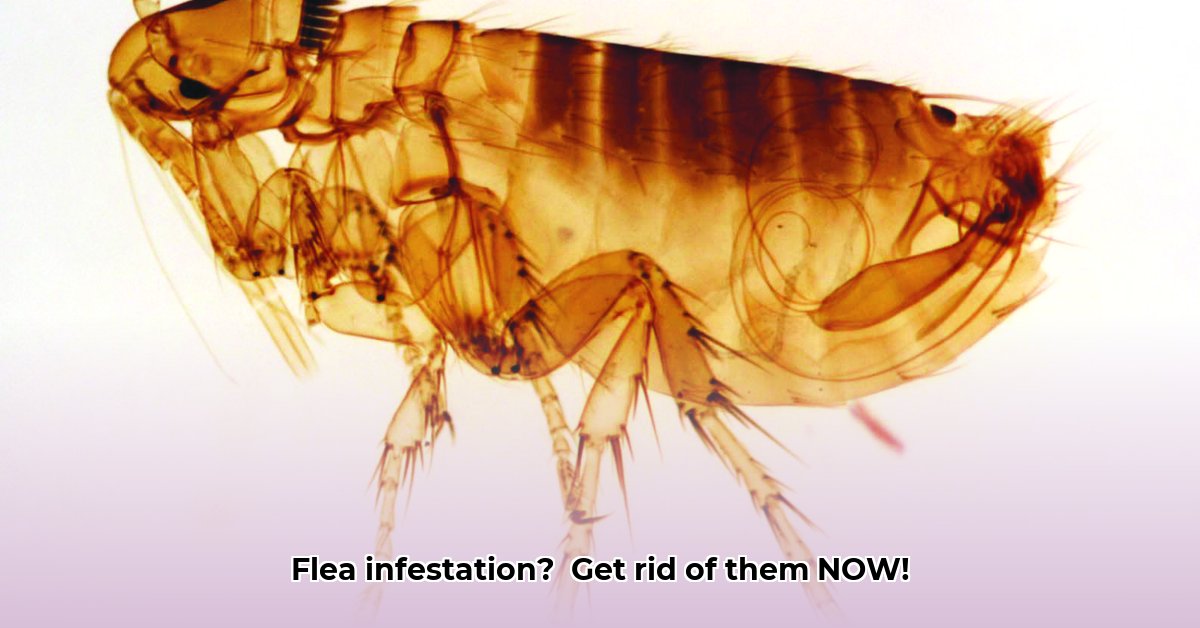Ugh, fleas! They’re a real pain, but don’t worry, you can get rid of them. This guide will walk you through everything you need to know to conquer those pesky critters and keep them out of your house. We’ll show you how to choose the right flea spray, whether you prefer a natural option or a chemical one, and explain how to use it safely. More than just spraying, though, we’ll cover the whole picture: cleaning, vacuuming, treating your pets – the works! We’ll make sure you understand why doing all these things together is the best way to get rid of fleas and keep them away for good. So whether you’re dealing with a major infestation or just want to prevent one, read on for simple, effective steps to a flea-free home.
Flea Spray in House: Your Guide to a Pest-Free Home
Fleas: tiny, jumping terrors that can turn your home into a battlefield. They’re not just annoying; they can also cause significant itching and even pose health risks for your pets and family. According to the American Veterinary Medical Association (AVMA), fleas can transmit diseases like tapeworm and murine typhus. But don’t despair! Winning the war against these pests is entirely possible with a smart, multi-pronged strategy. This guide will walk you through everything you need to know about using flea spray effectively and safely, alongside other crucial steps.
Step 1: Prepare for Battle – Deep Cleaning is Key
Before you even think about spraying, get ready for a deep clean. This is your first line of defense, and it’s crucial for success. Think of it like this: you wouldn’t build a house on a shaky foundation, right? The same applies to flea control. A thorough clean disrupts the flea life cycle, reducing their numbers before you even unleash the spray.
-
Vacuum Power: Grab your vacuum and go to town! Focus especially on carpets, rugs, pet bedding, furniture upholstery – anywhere your furry friends spend time. Fleas and their eggs love to hide in fabrics. According to the EPA, vacuuming can remove up to 50% of flea eggs from carpets. Remember to immediately empty the vacuum cleaner bag or canister outside – you don’t want to re-introduce the fleas back into your home! Seal the bag in an additional plastic bag before disposal to prevent escape.
-
Laundry Day, Extreme Edition: Wash everything your pets frequently touch in hot, hot water – at least 130°F (54°C) is ideal. This heat kills fleas and their eggs on contact. Think pet beds, blankets, their favorite toys, even your own clothes if they’ve been in close contact with your pets. Add a cup of borax to the wash for extra flea-killing power.
-
Steam Power: If you have a steam cleaner, this is a great way to boost your cleaning efforts. Steam penetrates fabrics and surfaces, effectively killing hidden fleas and eggs. Target furniture, mattresses, and other areas where fleas might be lurking. The high heat of the steam cleaner (above 212°F or 100°C) is lethal to fleas and their larvae.
Step 2: Choosing Your Weapons – Flea Spray Options
Now comes the part where you choose your flea spray. There’s a variety of options available, each with its pros and cons. Making the best choice depends on your specific situation and individual preferences.
| Type of Spray | Pros | Cons | Safety Considerations |
|---|---|---|---|
| Chemical Insecticides (e.g., Pyrethrins, Permethrin) | Highly effective, especially for severe infestations; often fast-acting. | Can be toxic to pets and children if misused; potential environmental impact. | Always follow label instructions meticulously. Keep out of reach of kids and pets. Ventilate the area thoroughly after application. |
| Natural Flea Sprays (e.g., essential oils, diatomaceous earth) | Generally safer for pets and children; often plant-based ingredients. | May require more frequent applications; effectiveness may vary depending on the infestation. | Always perform a patch test on a small, inconspicuous area first to check for reactions. Some essential oils can be harmful to cats; research carefully. |
| Insect Growth Regulators (IGRs) | Prevents fleas from reproducing, breaking the flea life cycle. | Doesn’t kill adult fleas; needs to be used in combination with an adulticide. | Generally considered safe for pets and humans when used as directed. |
Important Note: Even “natural” sprays can sometimes cause skin irritation in sensitive individuals. It’s always wise to conduct a small patch test before a full-scale application. Apply a small amount to an inconspicuous area of skin and wait 24 hours to check for any redness, itching, or swelling.
Step 3: The Combined Assault – Integrated Pest Management (IPM)
Using flea spray alone is rarely enough to completely eradicate a flea infestation. The most effective approach is an Integrated Pest Management (IPM) strategy – think of it as a combined offensive to overwhelm the enemy. This means combining several methods for maximum impact.
-
Clean Sweep: We already covered the importance of thorough cleaning – remember, this is the foundation.
-
Pet Protection: Consult your veterinarian. They can recommend appropriate flea preventatives for your pets, protecting them and preventing re-infestation. Common options include topical treatments, oral medications, and flea collars. This is crucial, as pets often bring fleas inside.
-
Targeted Spraying: Now, apply your chosen flea spray, focusing on areas where fleas are most likely to hang out (pet bedding, carpets near pet resting areas, etc.). Pay close attention to the product label; follow the instructions precisely regarding application, safety, and ventilation. When spraying carpets, lift the fibers with a brush to ensure the spray penetrates deeply.
Step 4: Maintaining Victory – Long-Term Prevention
You’ve won the battle, but the war might not be entirely over. Regular maintenance prevents future infestations.
-
Vacuum Regularly: Continue regular vacuuming to catch any lingering fleas or eggs. Aim to vacuum high-traffic areas at least twice a week. Consistency is key!
-
Ongoing Pet Protection: Stick to the vet-recommended schedule for your pet’s flea preventative. Missing even one dose can leave your pet vulnerable to re-infestation.
-
Yard Maintenance: Fleas can also live in your yard. Keep your grass mowed, remove leaf litter, and consider using a yard spray specifically designed to kill fleas. Focus on shady areas where fleas thrive.
-
Vigilance is Key: Keep a close watch on your pets and home for any signs of fleas (biting, scratching, small jumping insects). Catching a re-infestation early makes it much easier to manage. Check your pet’s fur regularly, especially around the neck, ears, and base of the tail.
Remember, using flea spray is just one step in a larger strategy. By combining thorough cleaning, pet treatment, and strategic spraying, you can drastically improve your odds of winning the war against fleas and reclaiming your pest-free home. The key is consistent effort and a proactive approach!
How to Effectively Treat a Flea Infestation in My Home with Pets
Key Takeaways:
- A multi-pronged approach is crucial for effective flea control. This involves treating your pets, thoroughly cleaning your home, and potentially using flea sprays.
- Vacuuming frequently, especially pet bedding and carpets, is paramount. Dispose of vacuum bags immediately outside in a sealed bag.
- Hot water washing (at least 130°F) of all pet bedding and washable items eliminates fleas and their eggs. Add borax for added effectiveness.
- Various flea spray options exist, ranging from natural remedies to chemical insecticides. Choose based on the severity of infestation and safety concerns. Always follow label instructions.
- Integrated Pest Management (IPM) combines multiple strategies for best results. This is your best strategy.
- Ongoing vigilance and preventative measures are key to preventing future infestations.
Step 1: Prep Your Home for Battle
Before you even think about sprays, deep clean! Think of it as prepping the battlefield before the troops arrive. Fleas aren’t just on your pets; they’re in your carpets, furniture, and bedding.
- Vacuum Everything: Go crazy with the vacuum cleaner. Pay extra attention to pet bedding, carpets, upholstery, and any areas where your pets spend the most time. Use a vacuum with a HEPA filter to trap allergens and flea eggs more effectively. Empty the vacuum bag outside immediately! Think of it as a flea evacuation.
- Launder Everything: Wash all pet bedding, your bedding, and any washable items in hot water (at least 130°F) to kill any lingering fleas and their eggs. It’s like a hot shower for your laundry, eliminating all flea life stages.
- Declutter: Remove any unnecessary clutter that can harbor fleas. Think of it like simplifying your home and making it less hospitable for fleas.
Step 2: Choosing Your Weapons: Flea Spray Options
Now, let’s talk about flea sprays. Several options exist, each with its pros and cons.
| Treatment Type | Pros | Cons
- Gluten Free Meal Prep Ideas for Delicious, Hassle-Free Eating - November 28, 2025
- Gluten Free Meal Prep for Stress-Free and Healthy Eating - November 27, 2025
- Quick And Easy Chicken Thigh Meal Prep For Weight Loss - November 26, 2025










